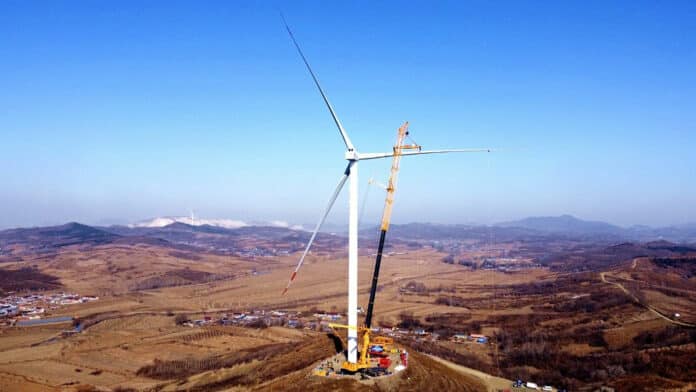Cranes have always been a vital component in the construction of new buildings. Now, with recent advancements in technology, they have been further enhanced to lift heavier materials in reduced time, making the construction process more efficient and streamlined.
One example of this is the XCA3000, the world’s largest tonnage wheeled crane, which recently completed its first assignment in Yingkou, Liaoning Province, China, setting a new benchmark in operational efficiency and lifting capacity. The crane was developed by XCMG, a Chinese multinational state-owned heavy machinery manufacturing company.
During its first assignment, the XCA3000 efficiently hoisted a 25-ton, 95-meter-long (311-feet-long) wind turbine blade to a height of 107 meters (351 feet) at the Dashiqiao Xintai New Energy 200 MW wind energy facility. The crane then accurately docked the blade onto the wind turbine hub and installed it in place.
With the use of a specially designed crane for hoisting wind turbines, the operational efficiency has more than doubled. Currently, a wind turbine nacelle, weighing 135 tons and with a power output of 5MW, can be effectively installed within a 30-minute operational window.
The XCMG XCA3000 wheeled crane has a lifting capacity of 3000 tons, making it ideal for installing up to 10 MW wind turbines. According to the company statement, it can hoist 190 tons at a height of 160 meters, setting a new record for the highest and heaviest lifting capacity among wheeled cranes.
The wind power industry is rapidly evolving towards larger, heavier, and bigger equipment. This requires the lifting and installation of equipment with higher lifting capacities, greater lifting heights, more efficient heavy-load handling, and enhanced safety technology. XCMG has independently developed wheeled cranes that can lift over a thousand tons, which is a significant achievement in import substitution with these models.
The XCA3000 has made significant improvements in high-performance flexible boom technology, which has helped to address some of the issues related to reduced lifting performance at high altitudes and limited space beneath the turbine lifting hooks. As a result, the installation time for a wind turbine has been reduced by 20-30%.
Moreover, the crane’s ability to transport heavy components like the main arm and legs, which can weigh up to 317 tons, along with its grade ability of 20%, has made it even more effective in heavy-load transfer.
